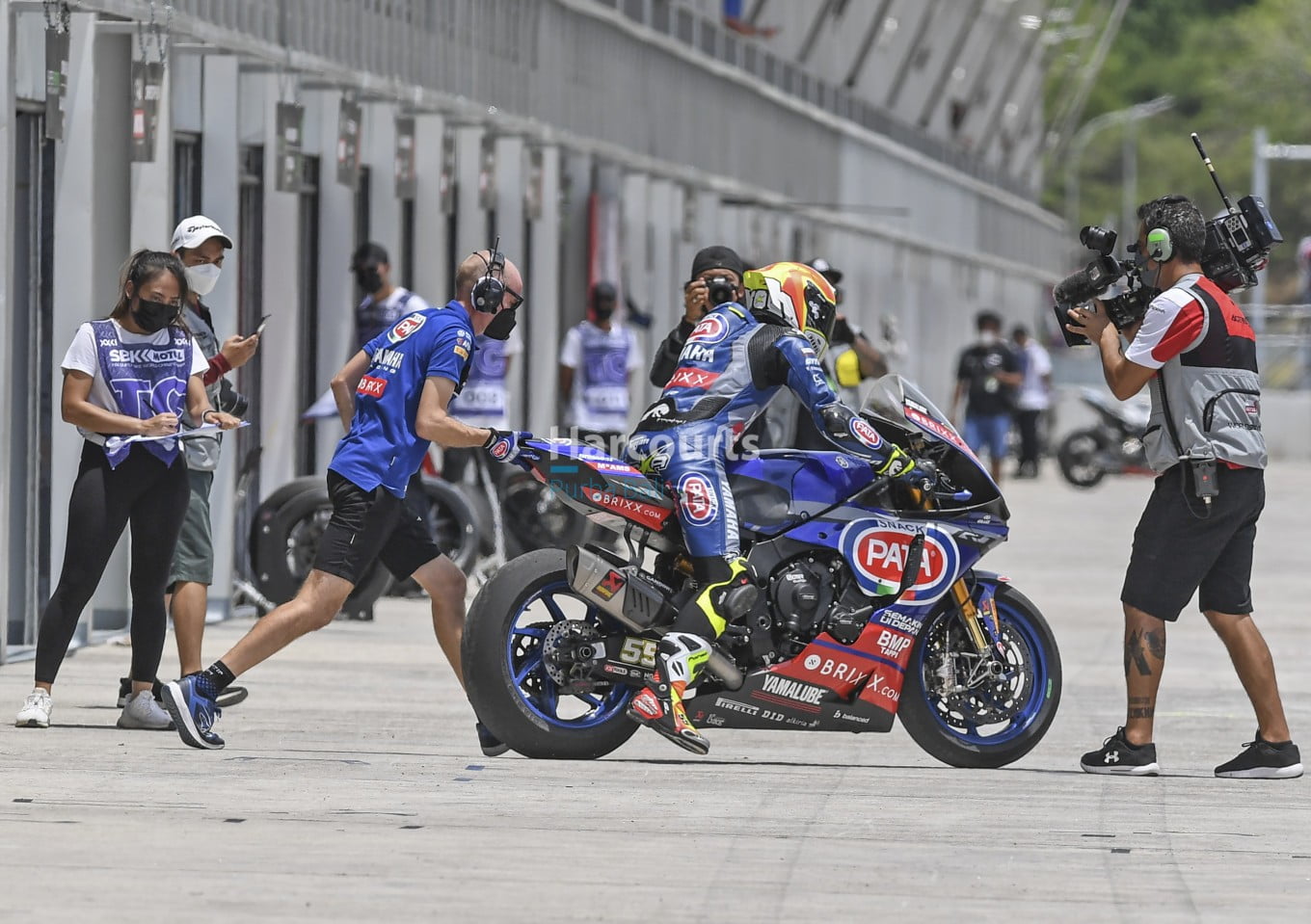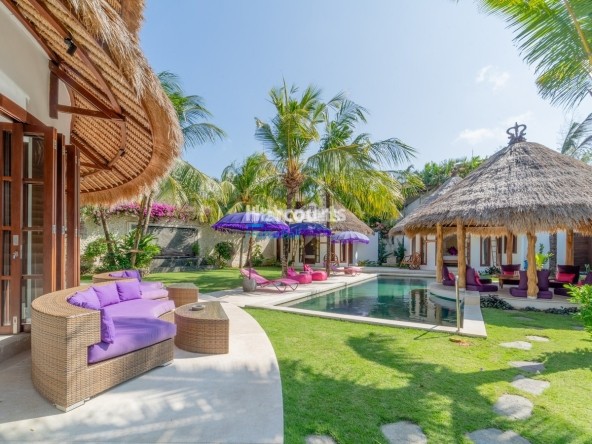A motorbike racer takes his vehicle through the paddock ahead of a free practice run for the Superbike World Championship (WorldSBK) at the Pertamina Mandalika International Street Circuit in Central Lombok, East Nusa Tenggara, on Nov. 19, 2021. The WorldSBK race features 23 racers from 12 teams and runs from Friday until Sunday.(Antara/Ahmad Subaidi)
Panca Nugraha and Dian Septiari (The Jakarta Post)
Mataram/Jakarta ● Sat, November 20, 2021
President Joko “Jokowi” Widodo’s big dream of developing tourism hubs outside of Bali looks to be reaping rewards.
His inauguration of the Mandalika Circuit in Central Lombok, West Nusa Tenggara (NTB), on Nov. 12 has spurred a sense of optimism and euphoria among residents especially given their bid to revive tourism from the pall of the COVID-19 pandemic.
While Indonesia’s second international racing circuit is expected to breathe new life into the local economy, it is also the centerpiece of Jokowi’s plan to turn the country into a destination for major international sporting events.
The brand new venue has been chosen as the final race track for the MOTUL FIM Superbike World Championship (WorldSBK) held over the weekend, a global event that is likely to attract up to 30,000 people to the resort island.
“Big events will continue to be held every year at the Mandalika Circuit and it will certainly have an impact on economic growth in NTB,” the President promised when he inaugurated the circuit last week.
Mandalika is also set to host the MotoGP championship in March next year, after a string of delays brought about by COVID-19 restrictions.
Indonesia previously hosted MotoGP and Superbike events in the 1990s at the Sentul International Circuit in Bogor, West Java, but activities there were brought to a halt as a result of the Asian Financial Crisis of the 1990s.
The two events may to some extent help cushion the blow of losing the 2032 Olympic Games bid to Australian city Brisbane, being the first of a few mainline international sporting events Indonesia will host since the 2018 Asian Games.
Economic stimulus
The head of the NTB chapter of the Indonesian Hotel and Restaurant Association (PHRI), Ni Ketut Wolini, said that the two sporting events were already bringing much-needed exposure to the region despite COVID-19.
For the WorldSBK event alone, the local PHRI chapter has prepared at least 16,800 hotel rooms across 1,300 hotels.
It is estimated that the circuit’s first big event will be able to pull in around 30,000 spectators – meaning that in an ideal scenario, demand for accommodation will outgrow supply.
Samsul Bahri, the head of the Mandalika Hotel Association, said the WorldSBK event was expected to create up to 8,000 new jobs for the local populace, if tallied together with the requirements of the 2022 MotoGP. “Our projection for manpower in the development of the Mandalika KEK for infrastructure is around 5,800 jobs until 2029, while the [hospitality] industry will need 21,219 workers until 2039,” Samsul said.
Long view But for all that the burgeoning tourism destination and race track is worth in terms of potential economic value, not all local tourism practitioners think it will be an “instant remedy” capable of turning the tide against the pandemic.
“For the long term, maybe. The President is right to say that Mandalika is bound to become a new economic hub. But for the time being, there are still so many challenges to overcome that we must look at what is in the realm of possibility,” said Furqon Ermansyah, chairman of the Friends of National Tourism (Sahabat Pariwisata Nasional) civil society group, in Mataram on Friday.
Furqon, known locally as Rudi Lombok, said that tourism in Lombok and NTB had reached its nadir twice over the past few years: once from a 7.0 magnitude earthquake in 2018, and a second time because of COVID-19.
The effects were felt across the region, not only in Mandalika, but also in other famous tourist destinations such as Gili Trawangan and the Senggigi tourist strip.
“Our tourist visit numbers plummeted due to the pandemic, and 26,000 tourism workers were either furloughed or let go,” Rudi said.
Spreading wealth
Despite shining a spotlight on the region, Rudi said the WorldSBK event still offered limited direct benefits outside of the accommodation and transportation sectors.
“Hotels and transportation services will indeed profit, but small businesses and handicraft workers don’t get much action. People are there to watch the race, not shop,” he said.
Meanwhile, the chairman of the Indonesia Tourism Intellectuals Association (ICPI), Azril Azahari, said that tourism development in NTB must also focus on offering benefits to local communities, not just investors.
A report from a United Nations human rights expert earlier this year criticized the Mandalika project, which is said to have uprooted local and indigenous communities and that local residents were subjected to threats and intimidation, and forcibly evicted from their land without compensation.
‘Good host’
In spite of the challenges that the region faces, NTB Governor Zulkieflimansyah said that hosting the WSBK and MotoGP events in Mandalika remained a good opportunity to revive the local tourism sector.
“Everything is a continuous process of review and improvement. The WorldSBK event will be the first step toward making Mandalika a new economic hub,” the governor said this week. “Our task now is to ensure we are a good host to visiting guests.”
The Mandalika Circuit is located in the south of Lombok Island on a 133-hectare plot in the Mandalika KEK, and is part of a US$3 billion state-backed economic development program, from which $1 billion was allocated to the building of the race track.
The 4.31-kilometer track features 17 corners that showcase various Mandalika tourist spots, and is able to cater to 150,000 spectators, split between the 50,000-plus seat grandstand and other viewing areas.





